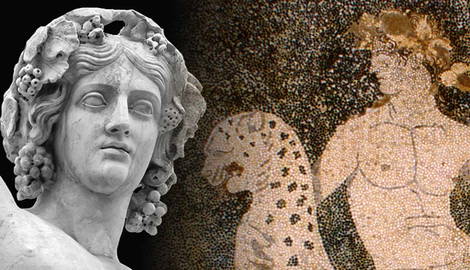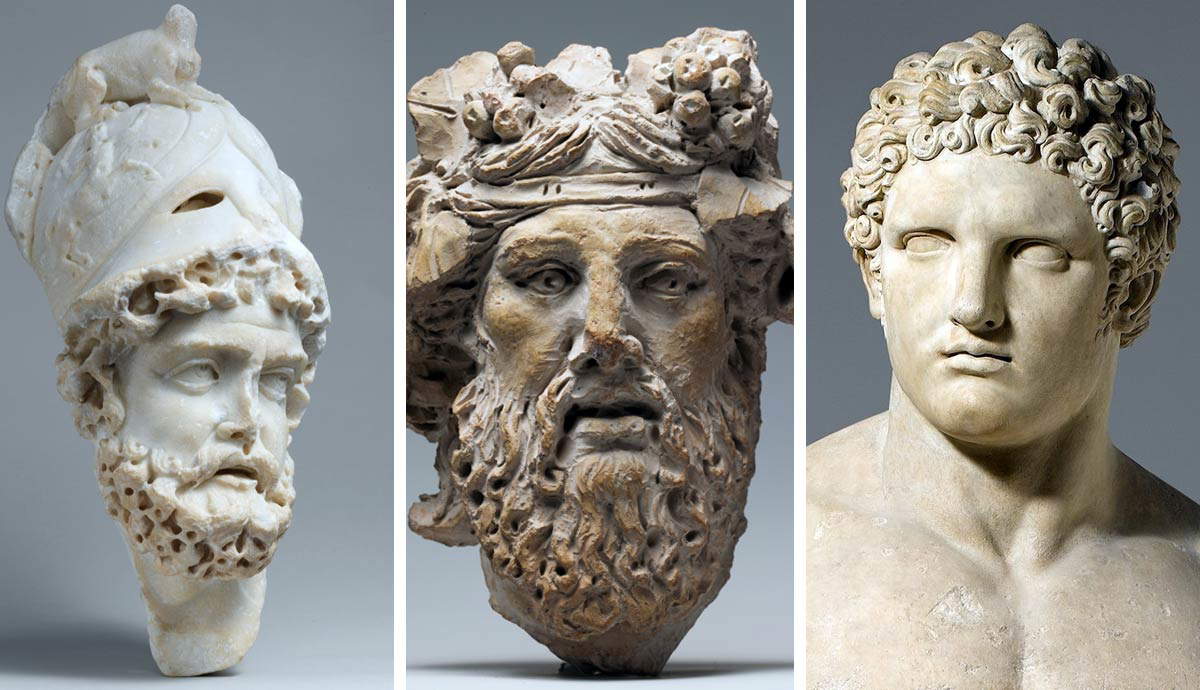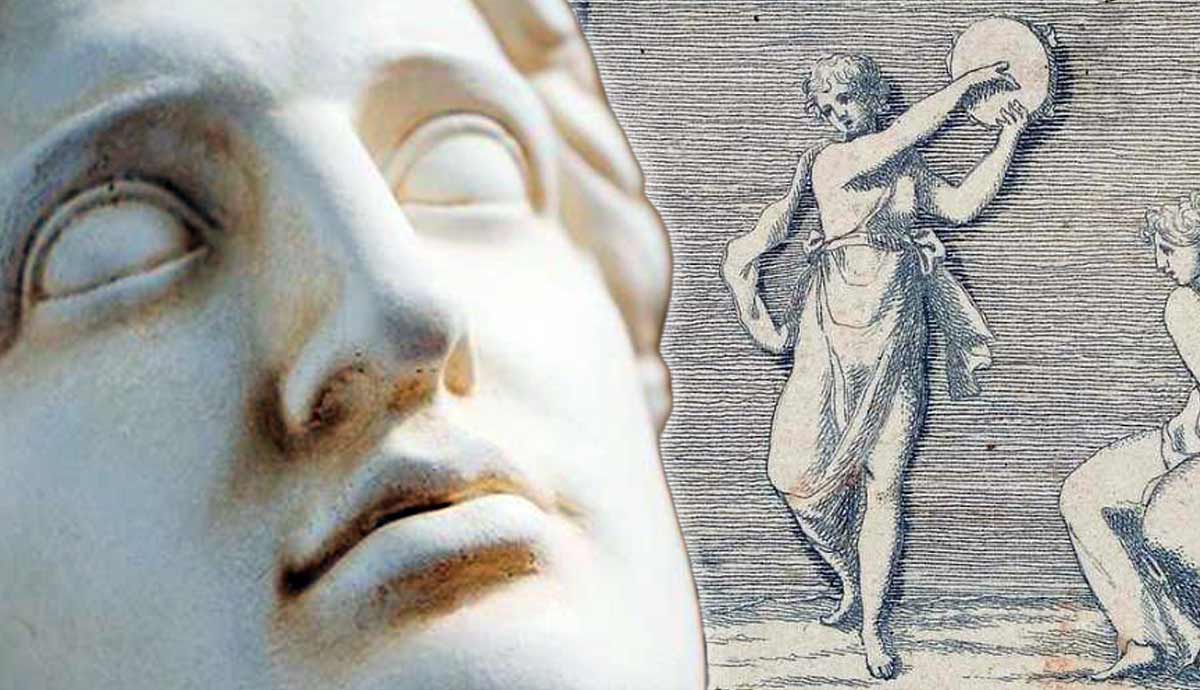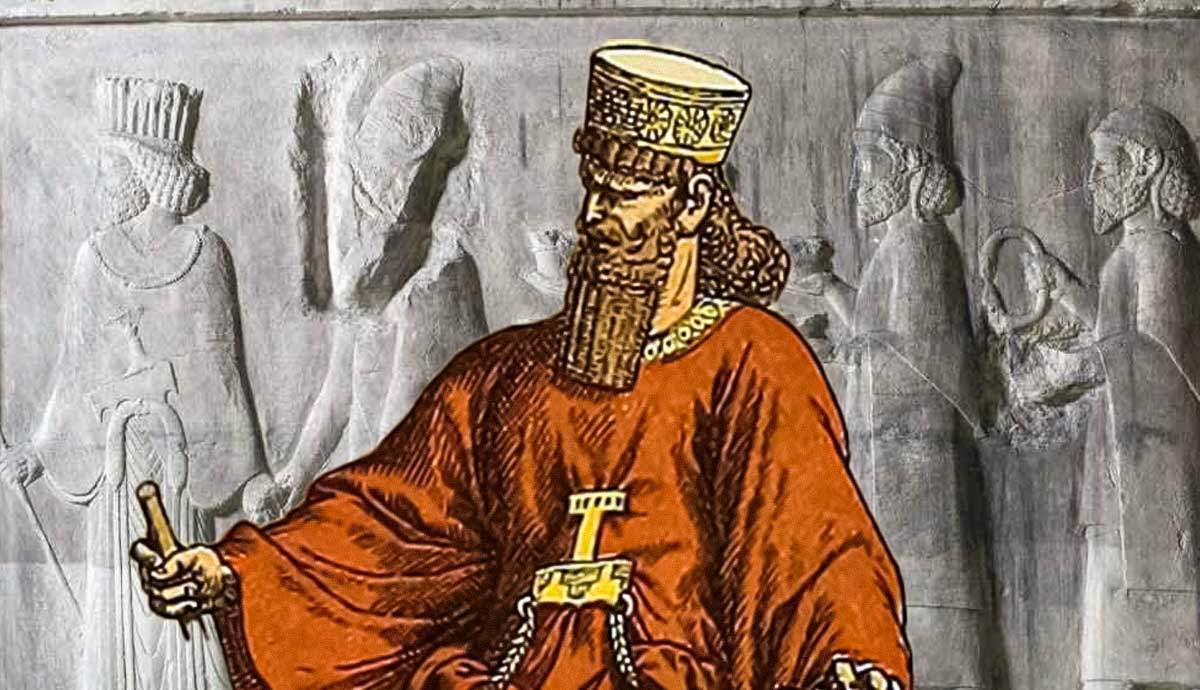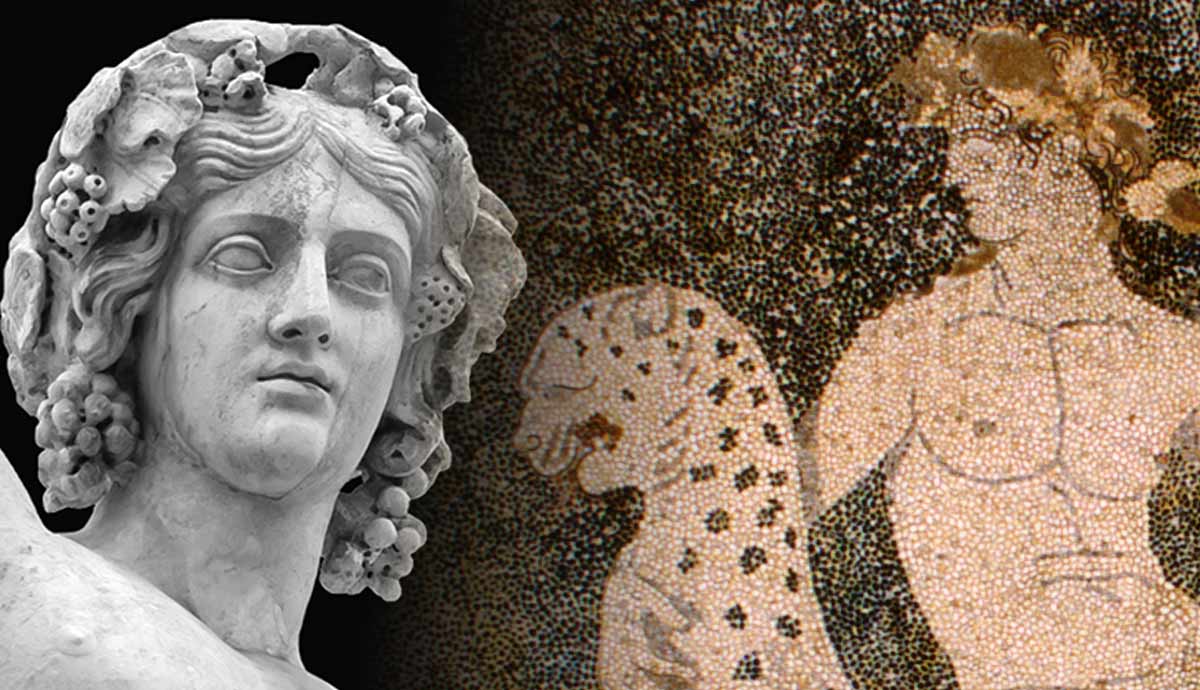
Dionysus was one of the twelve Olympian deities the ancient Greeks believed ruled over the cosmos. He was the patron god of wine and merriment, credited with the discovery of the grapevine. He was also known to cause madness in those who offended him. Dionysus was commonly depicted with a drinking cup, a crown of ivy, and a thyrsus, which was a pine cone-tipped staff.
The Greeks considered Dionysus a foreign god from the east, and many of his mythological stories recount his wanderings around Asia. The epic poem Dionysiaca, written by the 5th century CE Greek poet Nonnus Panopolis, is the most detailed source for myths concerning the god Dionysus.
1. Birth of Dionysus and Wrath of Hera

Dionysus, called Bacchus by the Romans, was the son of Zeus and the Theban princess Semele. Zeus came to Semele in secret, trying to hide the affair from Hera, but the goddess was aware of his infidelity. Hera disguised herself as Semele’s elderly nurse and convinced the princess to have Zeus prove his godhood to her by revealing his divine form, knowing that no mortal could withstand the sight.
The next time Zeus appeared to seduce Semele, she asked him for a gift. He wanted to impress her, so he swore an unbreakable oath on the river Styx that he would give her anything she asked. Semele asked that Zeus come to her in the same way he would come to Hera when he was courting her. He tried to talk her out of it, but Semele was insistent. With no choice, Zeus revealed his divine form, appearing to her as blazing lightning and thunder. Semele was instantly burned away by the display.
Upon realizing that Semele was pregnant, Zeus removed the fetus from her womb and stitched it to his thigh. He carried the child until it had developed enough to be born, then removed the stitching. He gave the baby Dionysus to his mortal aunt and uncle, Ino and Athamas. But Hera still wanted revenge, so she drove his foster parents mad, causing them to murder their own children and themselves.
Zeus saved Dionysus, some say by transforming him into a goat, and brought him to Mount Nysa in Asia where he was raised by nymphs. But Hera’s anger was still not sated. She drove Dionysus mad and he wandered around the East, ranting and raving, before winding up in Phrygia. Here he was cleansed of his madness and taught sacred mysteries by Zeus’ mother, Rhea.
2. Ampelos and the Grapevine

A satyr named Ampelos was raised alongside Dionysus. While most satyrs had horse or goat-like features, Ampelos was known for being incredibly handsome. Dionysus fell in love with him. The only thing spoiling their romance was the knowledge that the young satyr was destined to die.
The goddess Ate, or Delusion, put the idea in Ampelos’ mind that gods can grant their mortal lovers divine gifts. Thinking to acquire such a divine gift, Ampelos decided to impress Dionysus by wrangling a bull. When he caught the animal and started riding it, he boasted that he was a better bull rider than Selene, goddess of the moon. Selene was offended by the remark and sent a gadfly to sting the bull, causing it to run around in a panic. It ran up a mountainside before eventually kicking Ampelos off its back. The young satyr tumbled down the mountain and broke his neck.
News was brought to Dionysus, who was heartbroken. He held a funeral for Ampelos and honored him by pouring ambrosia into his wounds. The corpse then metamorphosed into a grapevine. Dionysus crushed one of the newly created fruits in his hands and discovered that the effects of the ambrosia transferred into the fruit. This led to the invention of wine.
Another version of Ampelos’ death is found in Ovid’s Fasti 3, where the grapevine was a gift to Ampelos by Dionysus. When the satyr was picking grapes from the branch, he fell and hit his head. Dionysus named the vine after him, thus the Greek work for “vine” is ampelos.
3. Conquest of India

After the creation of the grapevine, Zeus commanded that Dionysus raise an army and drive the Indian people out of Asia. Rhea, Zeus’ mother, sent out messengers to gather warriors, and Dionysus was joined by a horde of mortals and gods. The conquest of India is the central event described in Nonnus Panopolis’ Dionysiaca.
The army set out and encountered the first contingent of Indian troops led by Astreis. Hera, still angry about Zeus’ infidelity, disguised herself as an Indian and rallied their forces, telling them not to submit to Dionysus and to fight to the death. Dionysus sent emissaries to the Indian leader, but they were chased away as Hera instructed. During the ensuing battle, Dionysus changed the water of a river into wine and the Indians drank from it. Having never before encountered wine, the Indian forces got drunk and fell asleep, allowing Dionysus to win the battle.
The god continued east into Arabia, where he was opposed by king Lycurgus of Thrace. Hera stirred Lycurgus to fight the god. At the same time, in a dream, she tricked Dionysus into going to the king unarmed with offers of peace. He did so, and Lycurgus struck at him with a pole-arm, causing the god to flee into the sea. Lycurgus was later punished by Zeus and made into a blind wanderer.
Dionysus’ battle against the Indians culminated in a battle between Dionysus and the Indian king, Deriades. Dionysus transformed into various animals during the fight, and then struck the king with his thyrsus, shattering his armor and sending Deriades fleeing into the river Hydaspes, ending the war.
4. King Midas

On his way back to Greece, Dionysus’ tutor, Silenus, went missing. He wandered off drunk and never returned. He was found unconscious in Lydia and taken to King Midas, who recognized him and treated him with hospitality. He hosted Silenus for ten days then led him back to Dionysus. The god was so grateful that he promised to grant King Midas a single wish. The greedy king wished that he could make anything he touched turn to gold.
Dionysus granted his wish, but as the king celebrated, he discovered that even food and water turned to gold at his touch. Unable to eat or drink, Midas soon began to consider his blessing a curse. He prayed to Dionysus to rid him of the curse, and Dionysus told him to wash his hands in the river Pactolus. The king did, and the gold blessing washed away in the water. The river was known for being abundant with gold ever since.
5. Hostage at Sea

On the coast of Asia Minor, Dionysus got aboard a ship headed for the island of Naxos, but was stopped short when pirates took him captive. The god warned them of their mistake, explaining that he was the son of Zeus, but the pirates didn’t believe him. Only the helmsman recognized him as a god, but he was unable to convince the others. To demonstrate his power and punish the pirates, Dionysus covered the ship in grapevines and transformed himself into a lion. Terrified, the pirates jumped overboard and were turned into dolphins.
6. Ariadne

When Dionysus arrived at Naxos, he found Ariadne, the princess of Crete who helped Theseus defeat the Minotaur and escape the Labyrinth. Ariadne was abandoned by Theseus while she was asleep as he was sailing home to Athens. Dionysus saw her and instantly fell in love with her. As she was heartbroken by Theseus’ betrayal, Dionysus comforted her and promised to gift her a “starry crown” if she became his wife. Ariadne happily accepted.
In another version of the story, Ariadne received a crown of gold and Indian jewels as a wedding gift from Aphrodite and the Seasons. After her death, Dionysus placed it among the stars.
7. Icarius and Erigone

Arriving in Attica, Dionysus was greeted by a farmer named Icarius. He gave him a vine-cutting and taught him the art of wine-making. When Icarius shared the wine with his neighbors, they thought that they had been poisoned and killed him. When they sobered up and realized what they had done, they tried to bury his body in secret, but they were discovered by Icarius’ daughter Erigone. She was so devastated that she hanged herself.
Dionysus was furious at what happened to them, so he drove all the women of Attica mad so that they hanged themselves as Erigone had. When the people bestowed cult honors on Icarius and his daughter, Dionysus relented.
8. King Penthus and the Bacchae

When Dionysus finally returned to Thebes, the city where his mother was born and raised. he declared himself as a god and the son of Zeus, but no one believed him. To punish the city, he drove all the women insane with divine ecstasy and sent them into the mountains to celebrate his rites. The current king, Penthus, followed the women and tried to stop them, but when he spied the rites, the women turned on him. Believing him to be a wild animal, the frenzied women tore him apart with their bare hands.
9. Semele in Hades

Dionysus was given permission by Zeus to retrieve Semele from Hades. When seeking a way down into Hades, Dionysus arrived in Argos and met a man named Polymnos, or Hypolipnus depending on the source, who showed him the entrance to the underworld. Polymnos asked only that Dionysus grant him a favor upon his return. The sources suggest that this was a sexual favor.
When Dionysus returned from the underworld, he found that Polymnos had died. He went to the man’s tomb, and using a piece of fig wood carved into a phallus, fulfilled his oath. This story is said to explain why phallic objects were part of Dionysus’ rites in Argos.
10. Rescue of Hera and Ascension to Olympus

According to Hyginus’ Fabulae 166, after Hera cast Hephaestus off Mount Olympus, the smith god plotted his revenge by building a throne covered in invisible chains and sending it up to Hera as a gift. When she sat on it, the chains coiled around her and bound her to the seat. No matter the pleading of the other gods, Hephaestus refused to release her. It was only when Dionysus went to him and got him drunk that he finally agreed to release his mother. Hera was so grateful that she welcomed Dionysus as an Olympian god.
